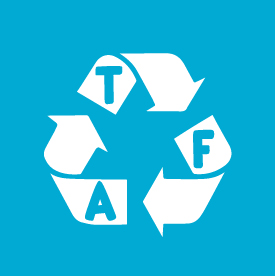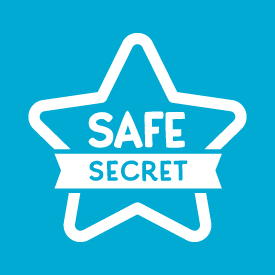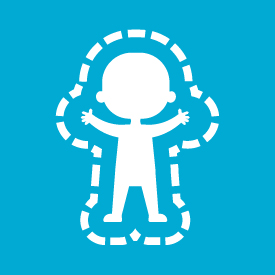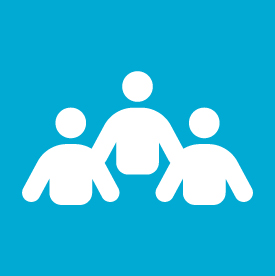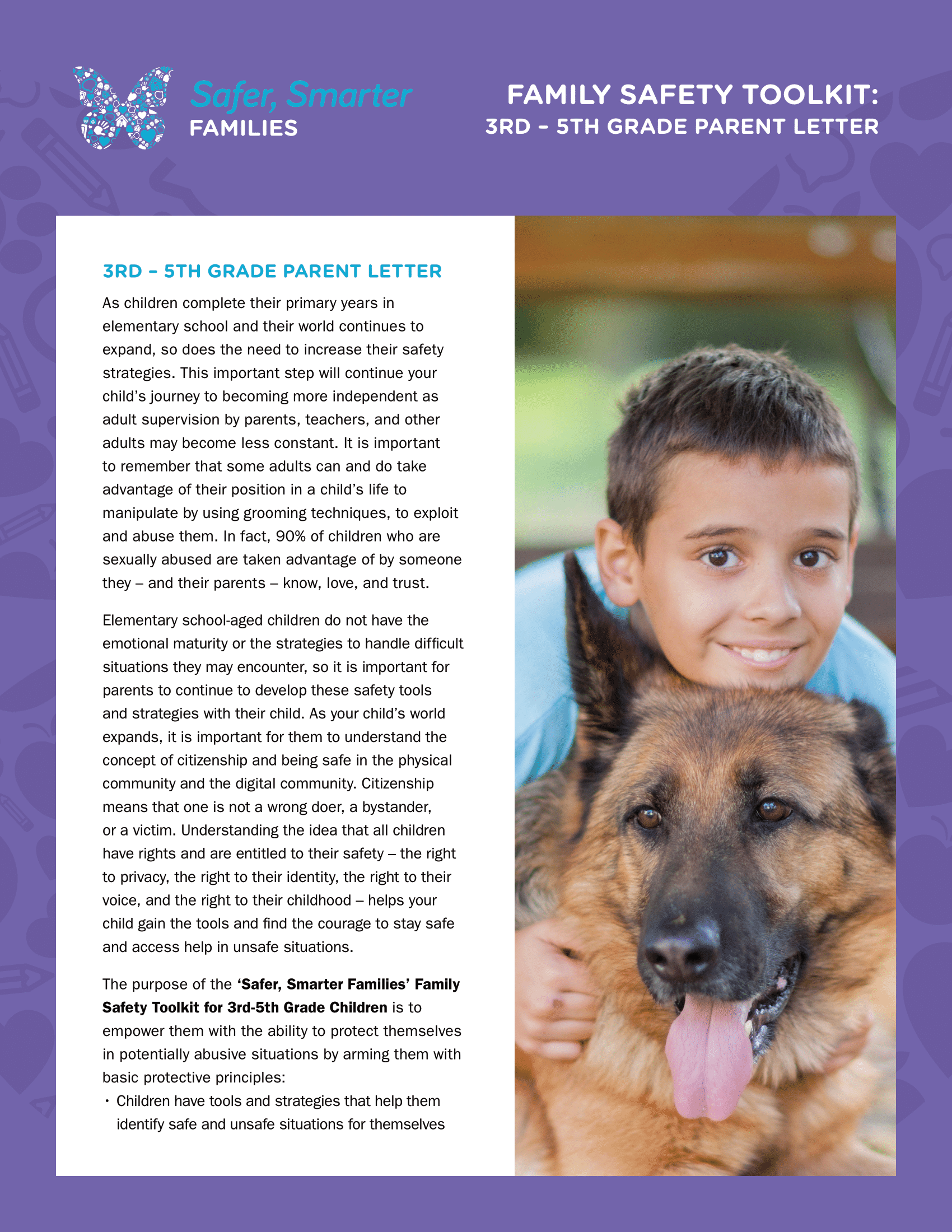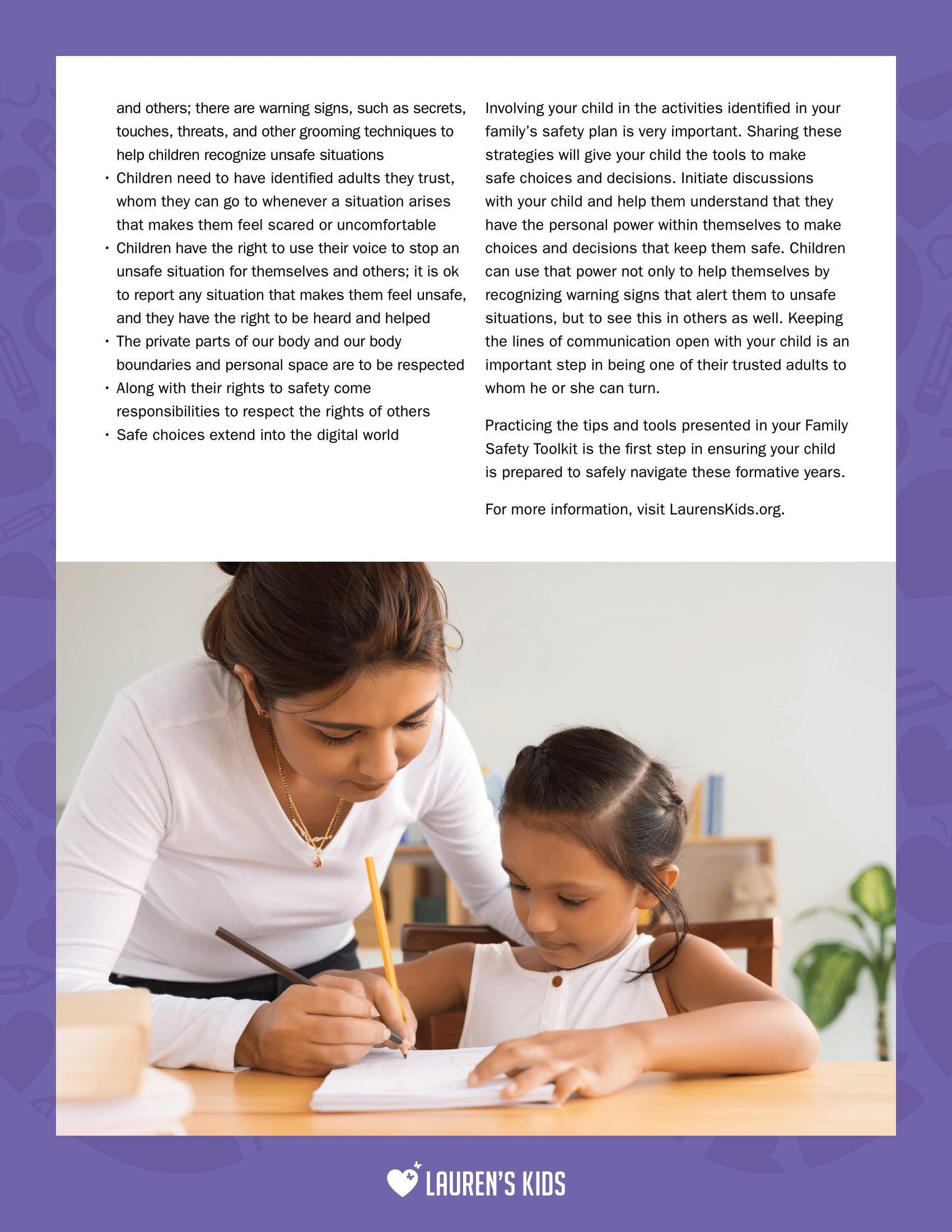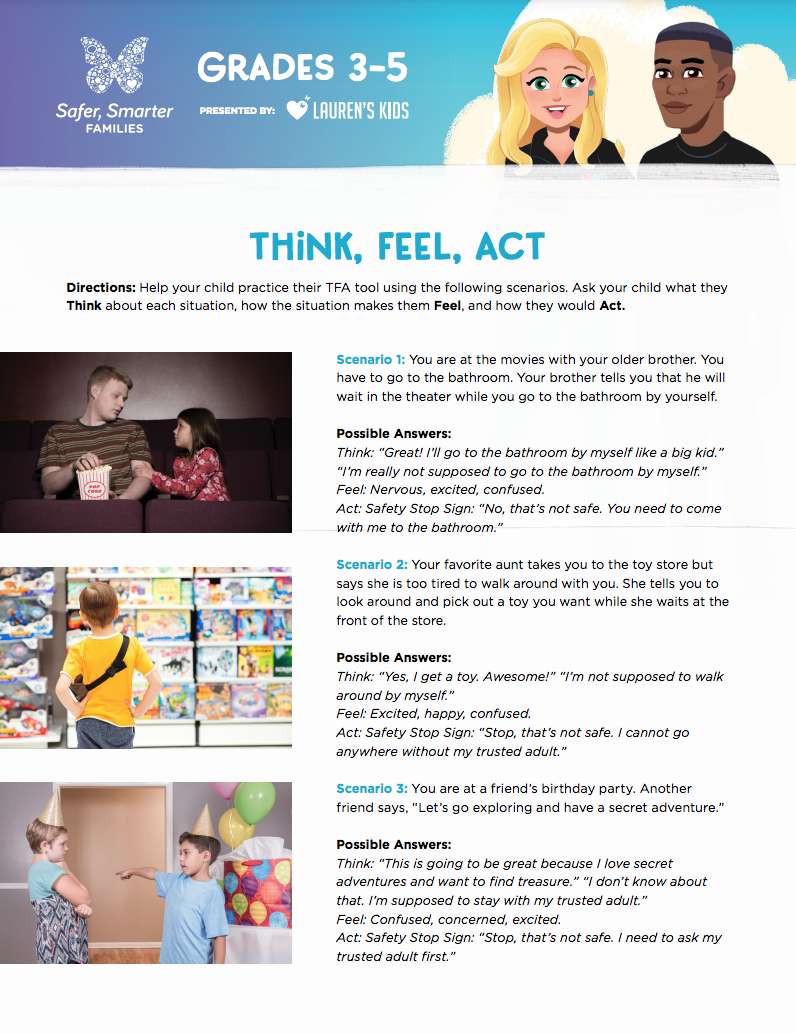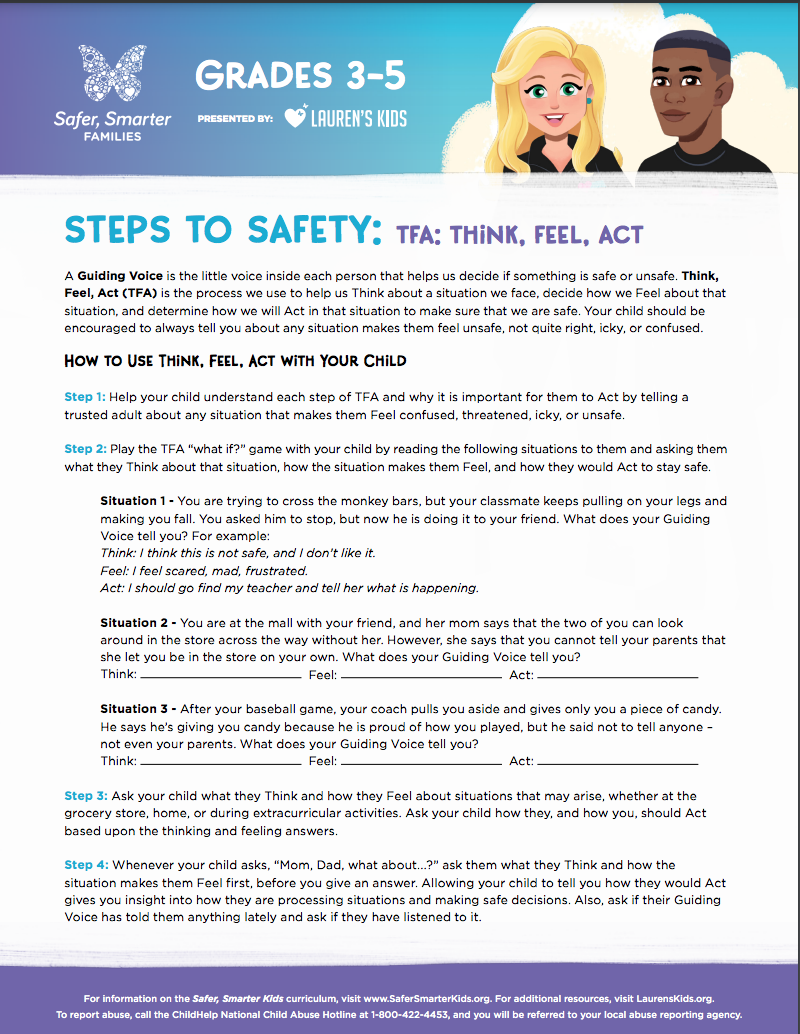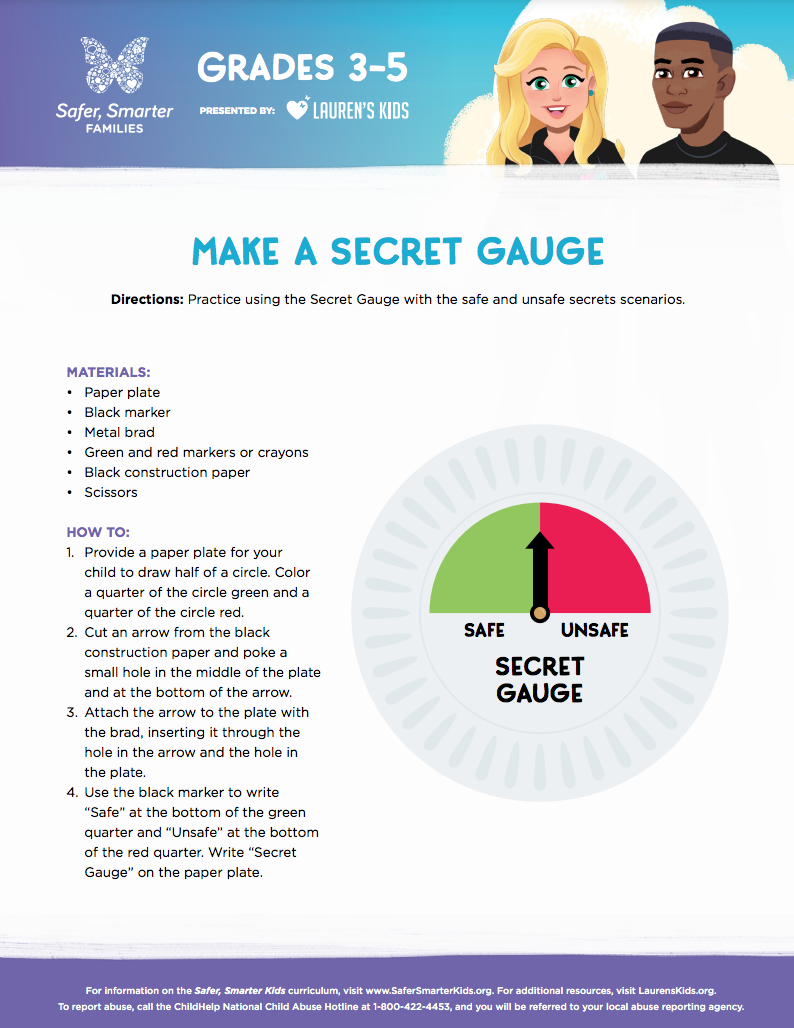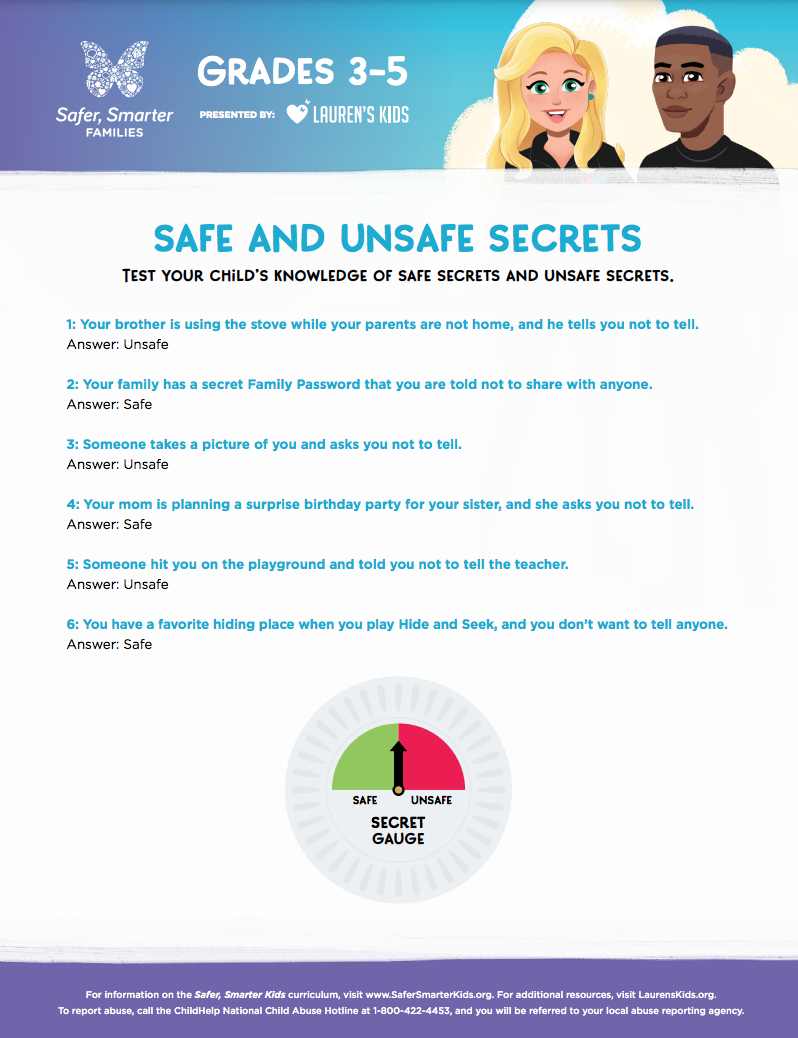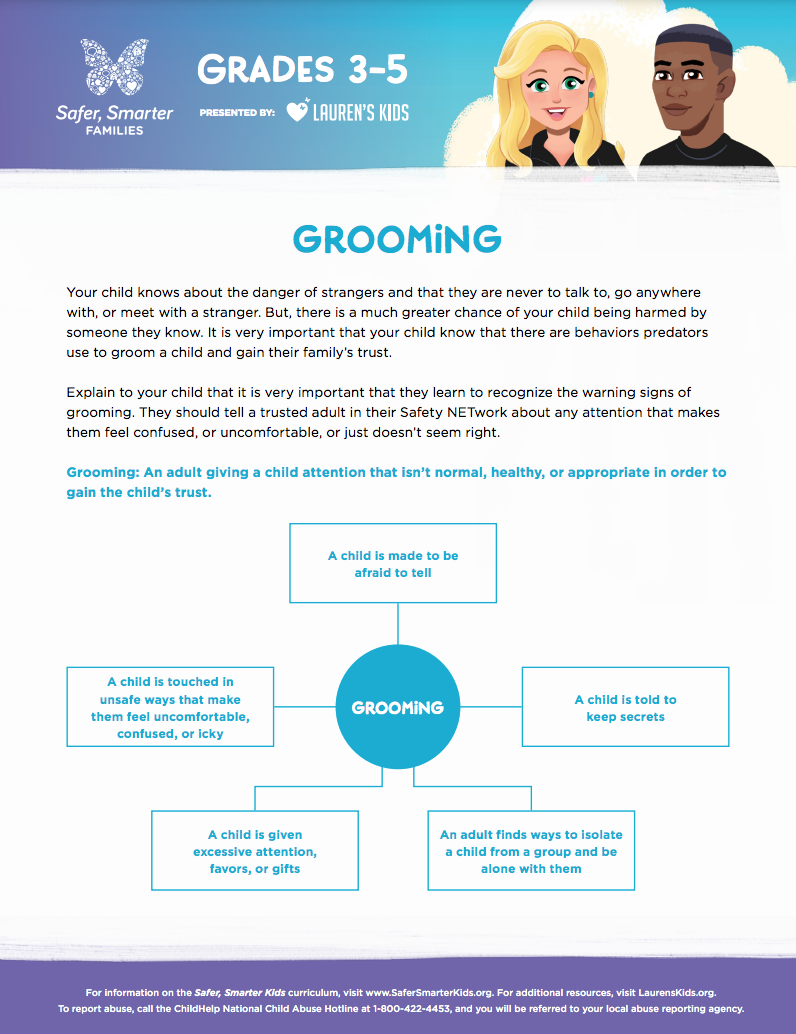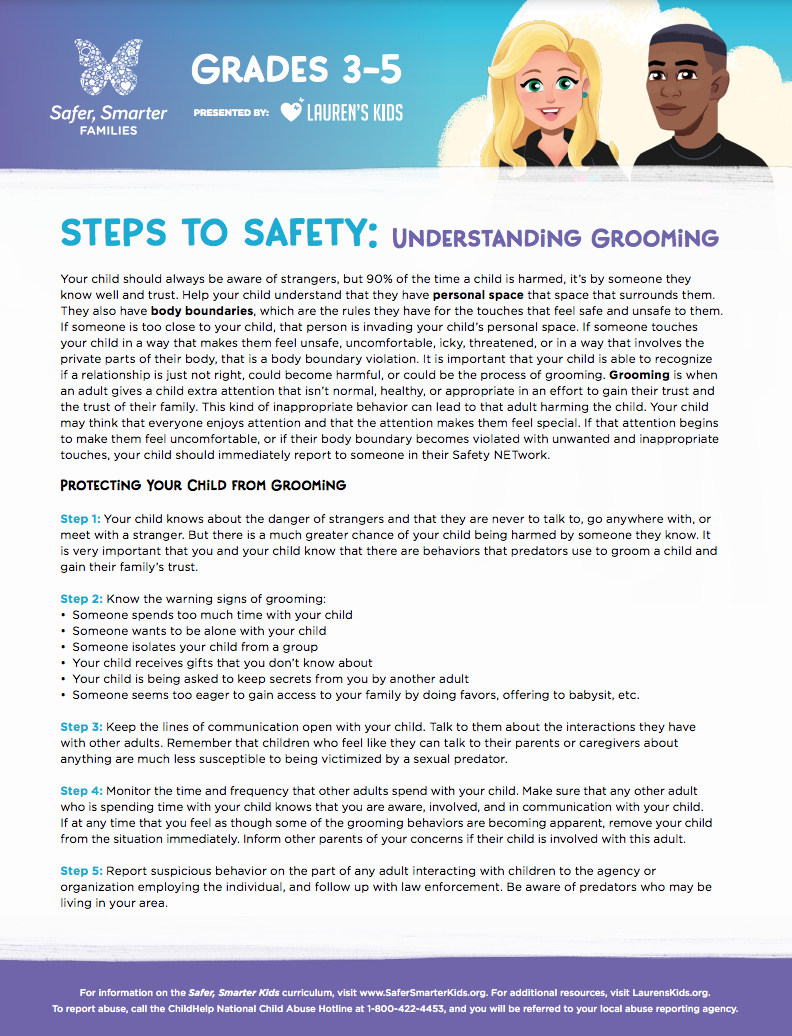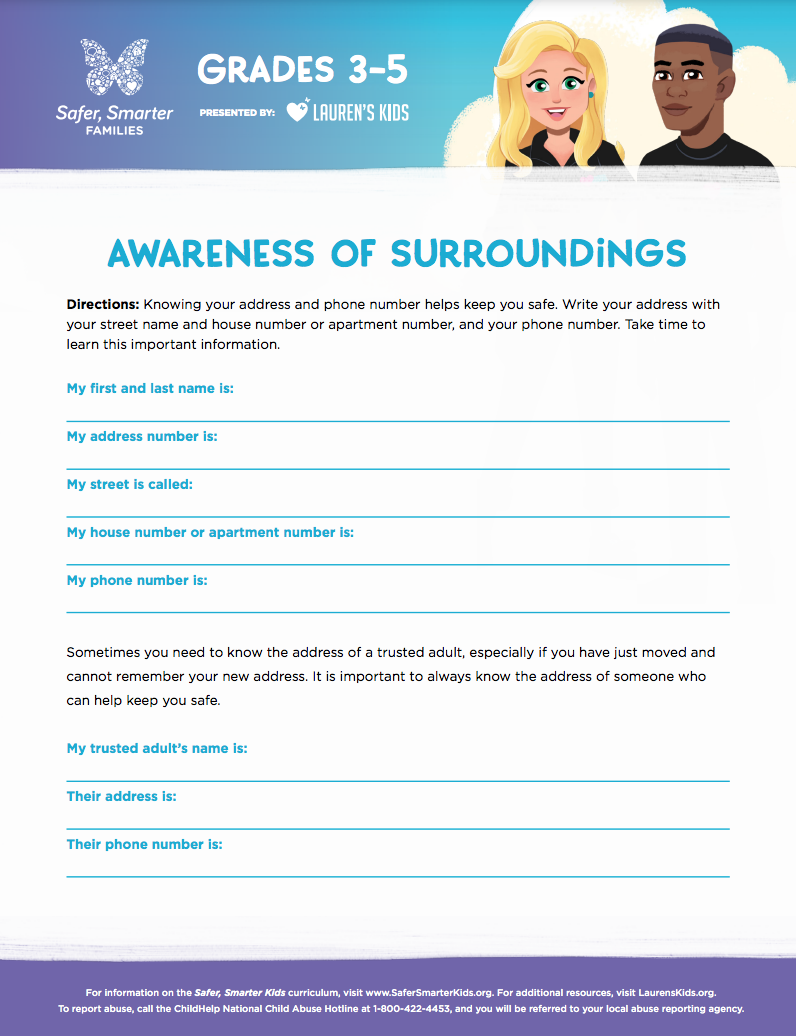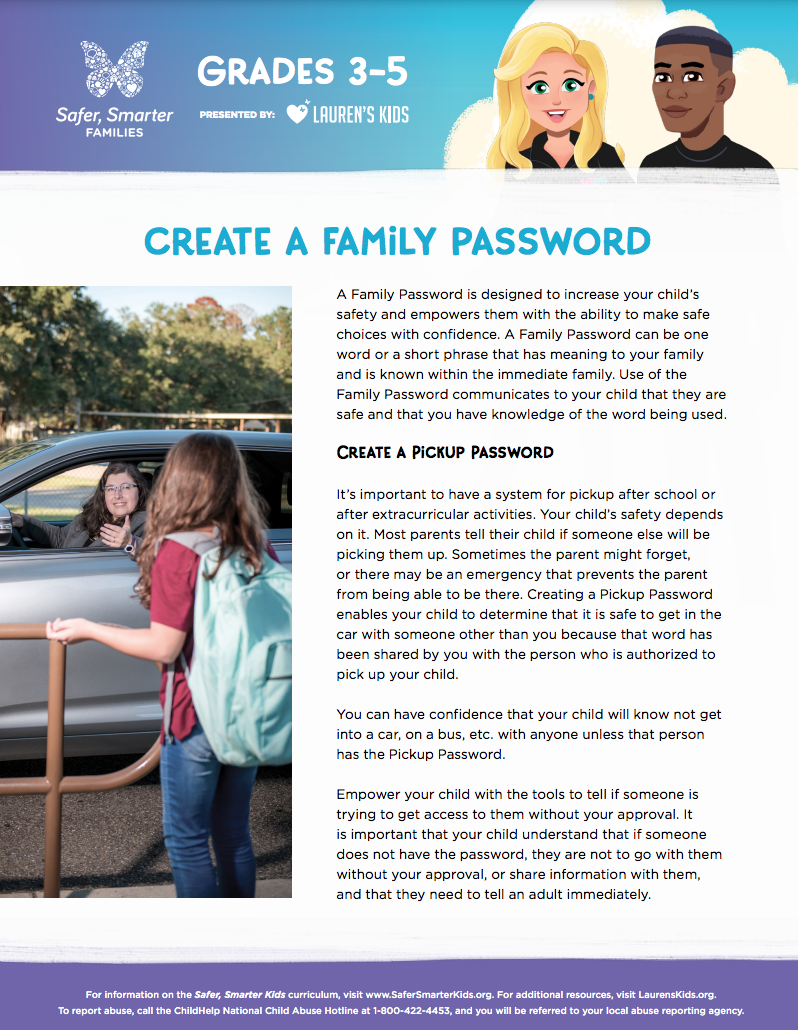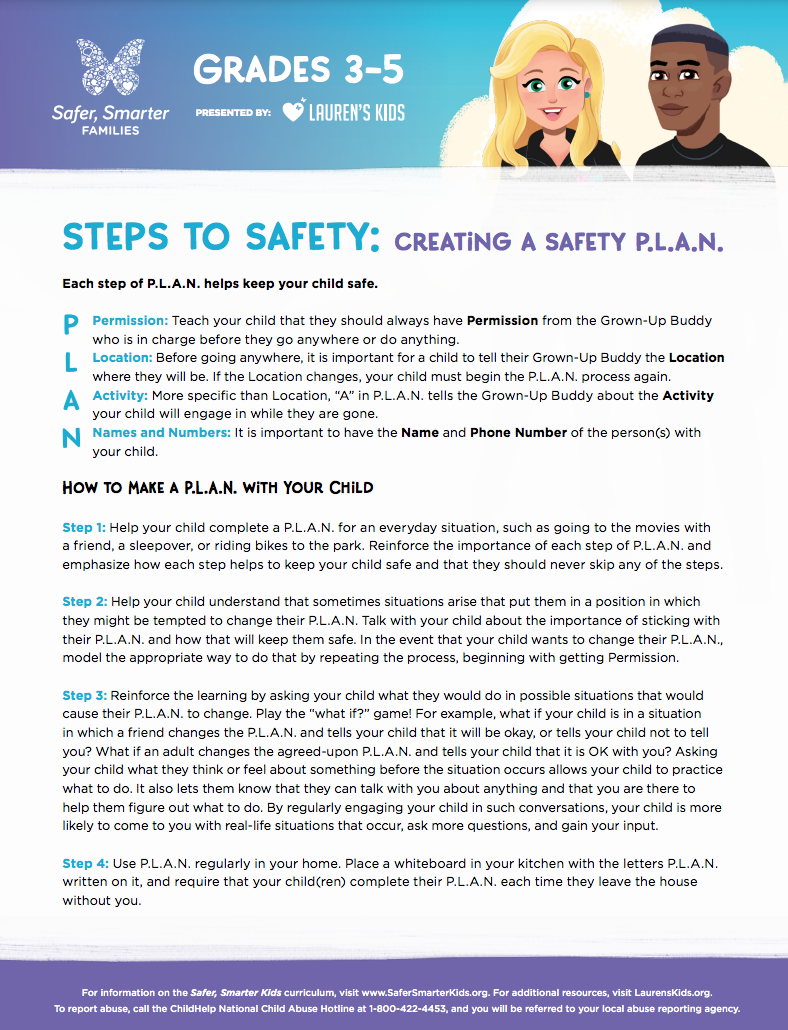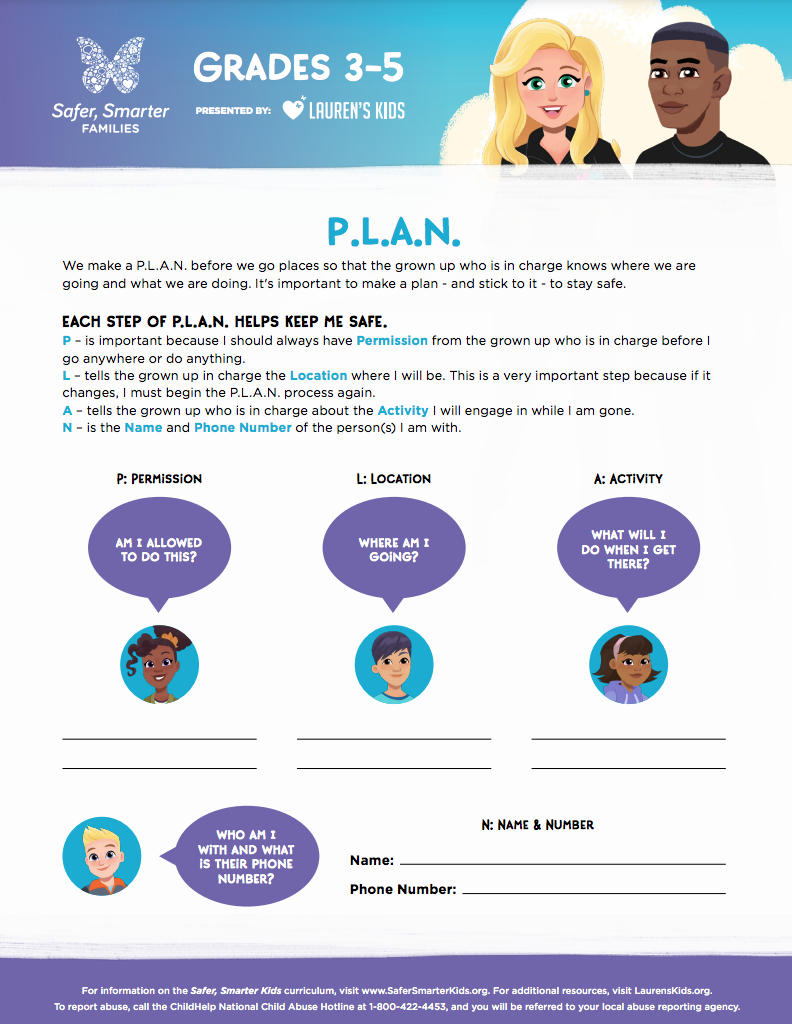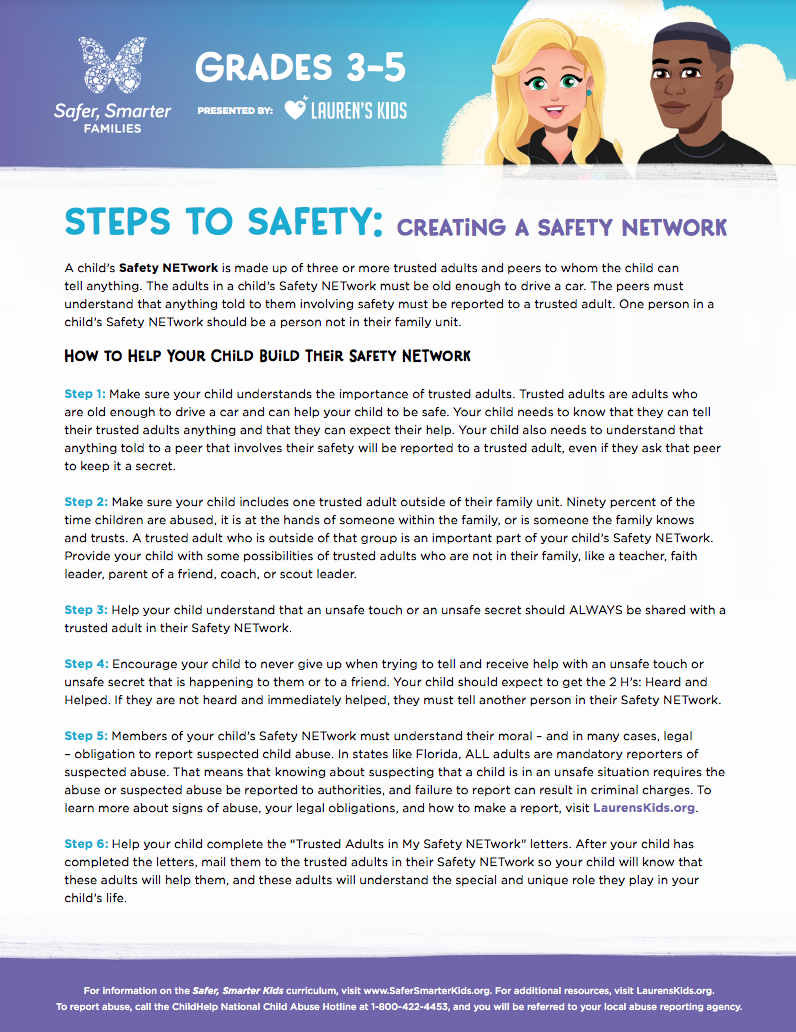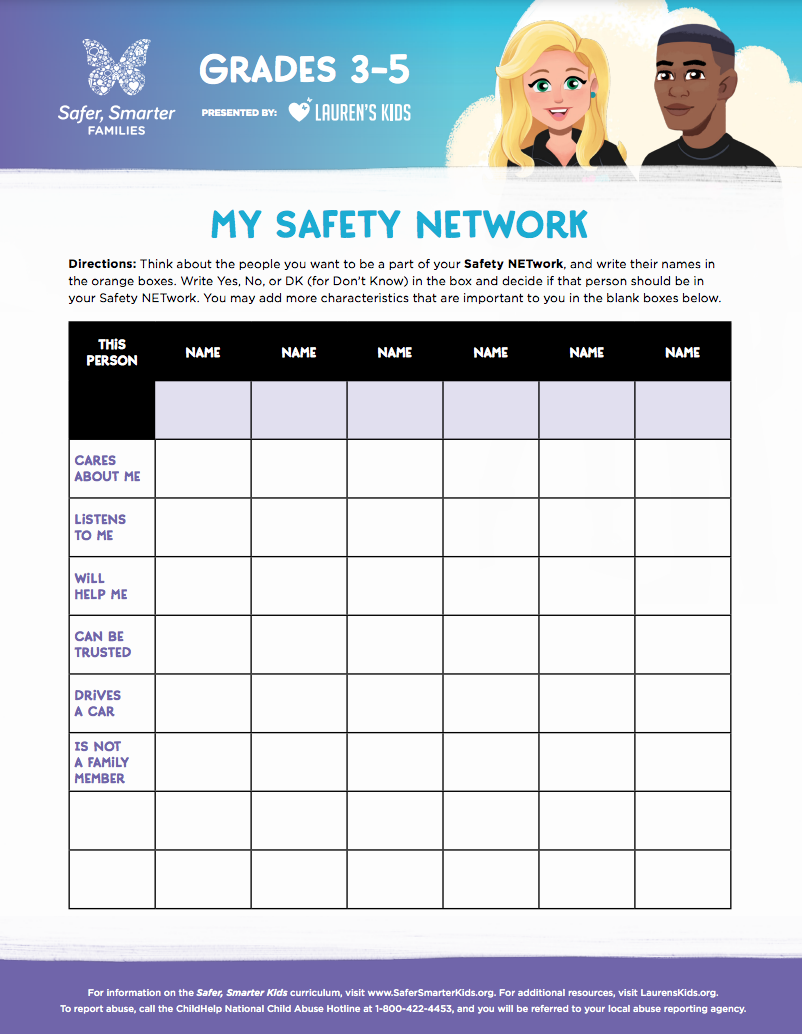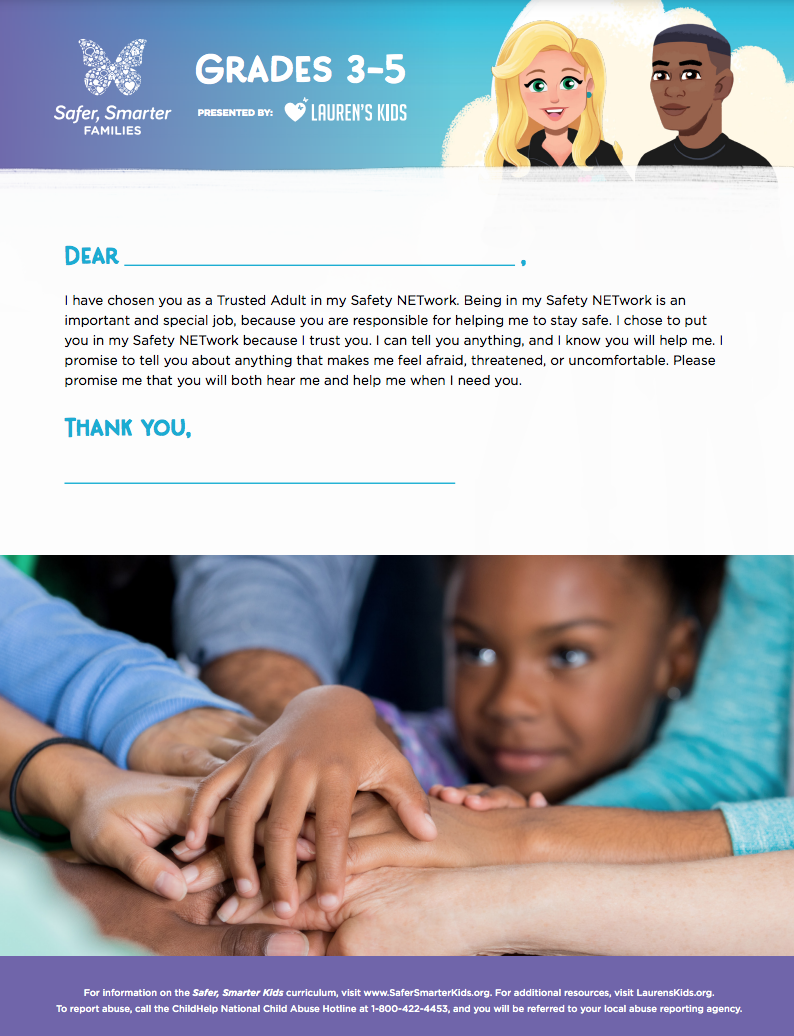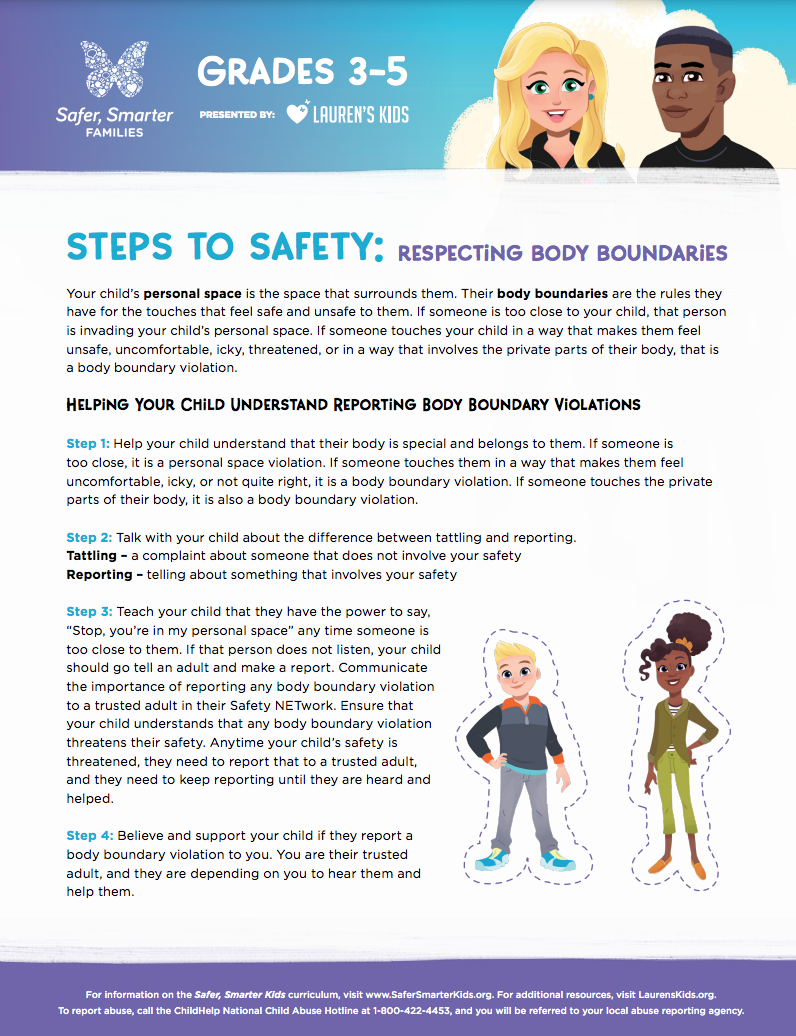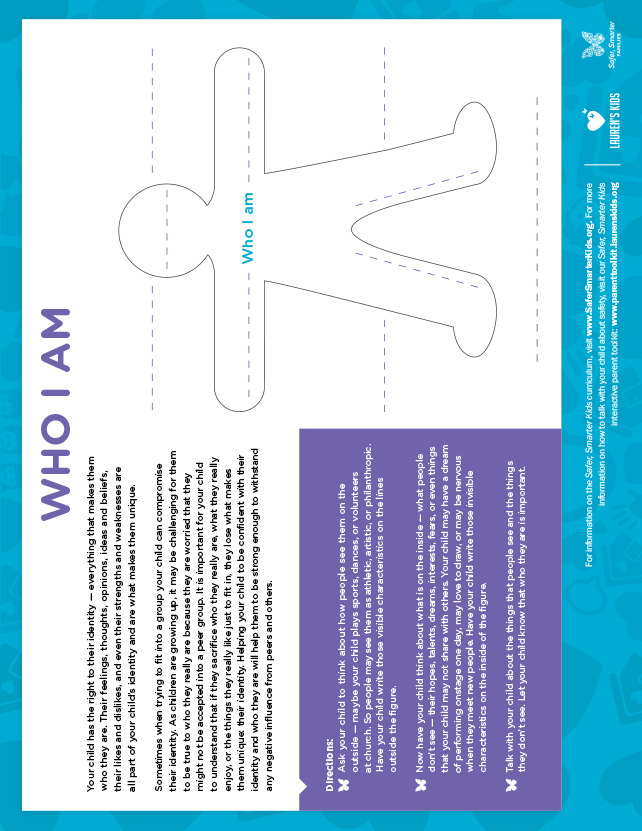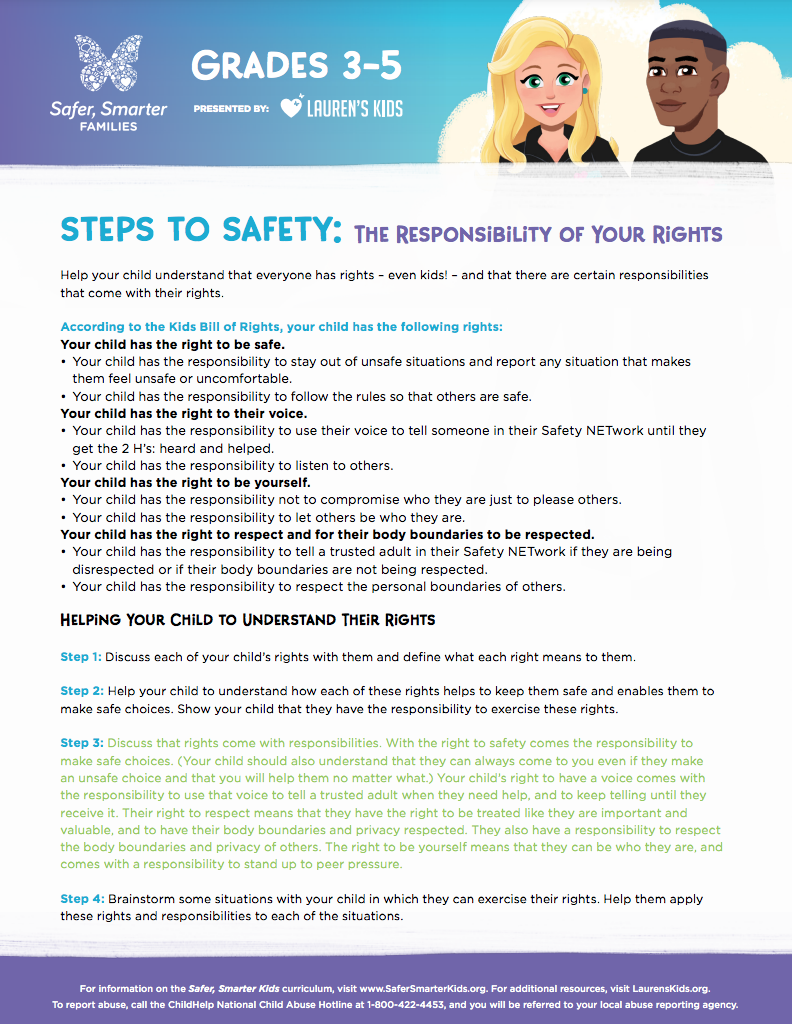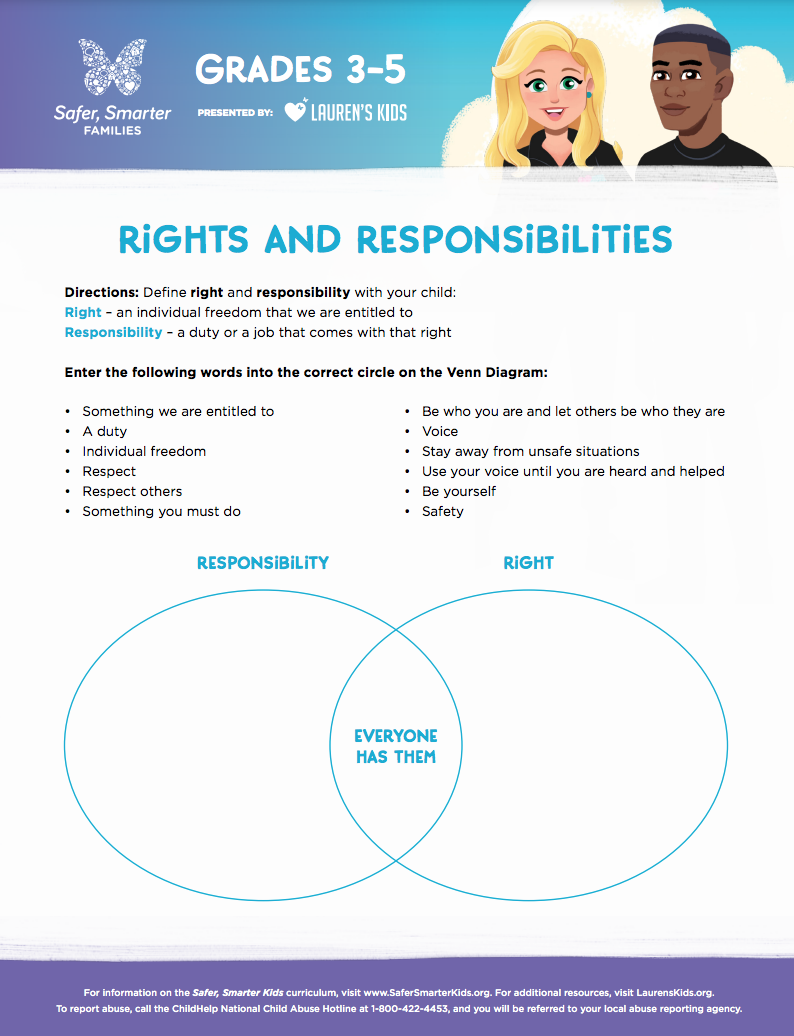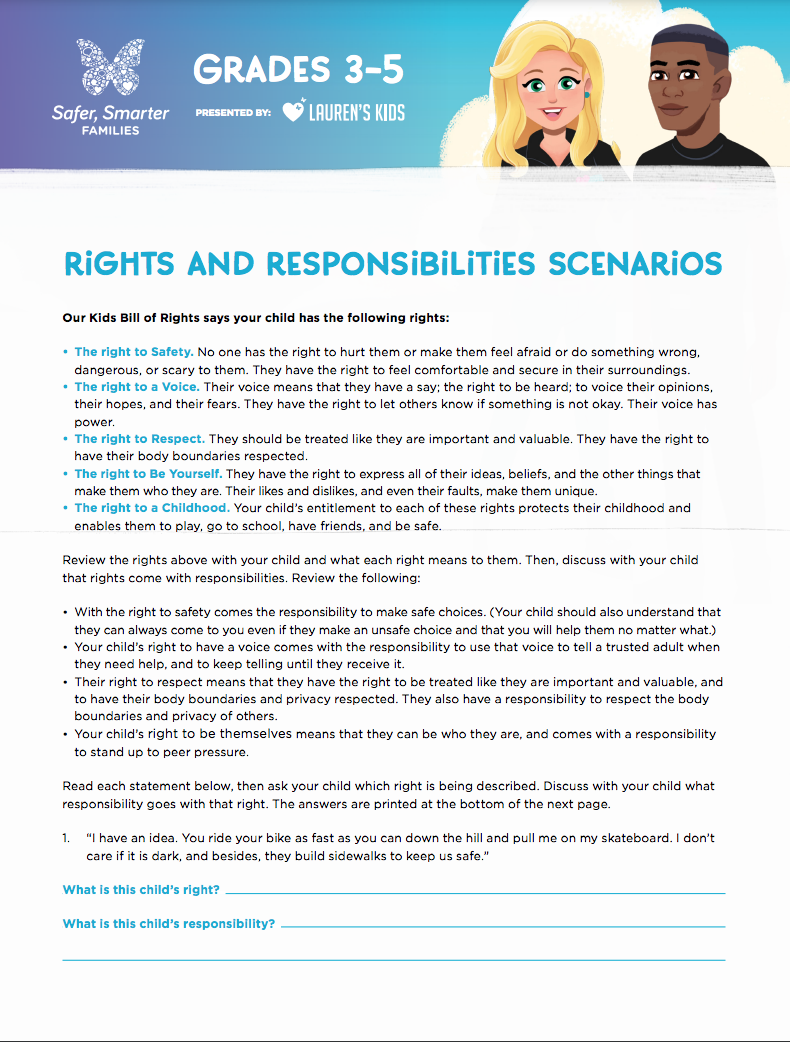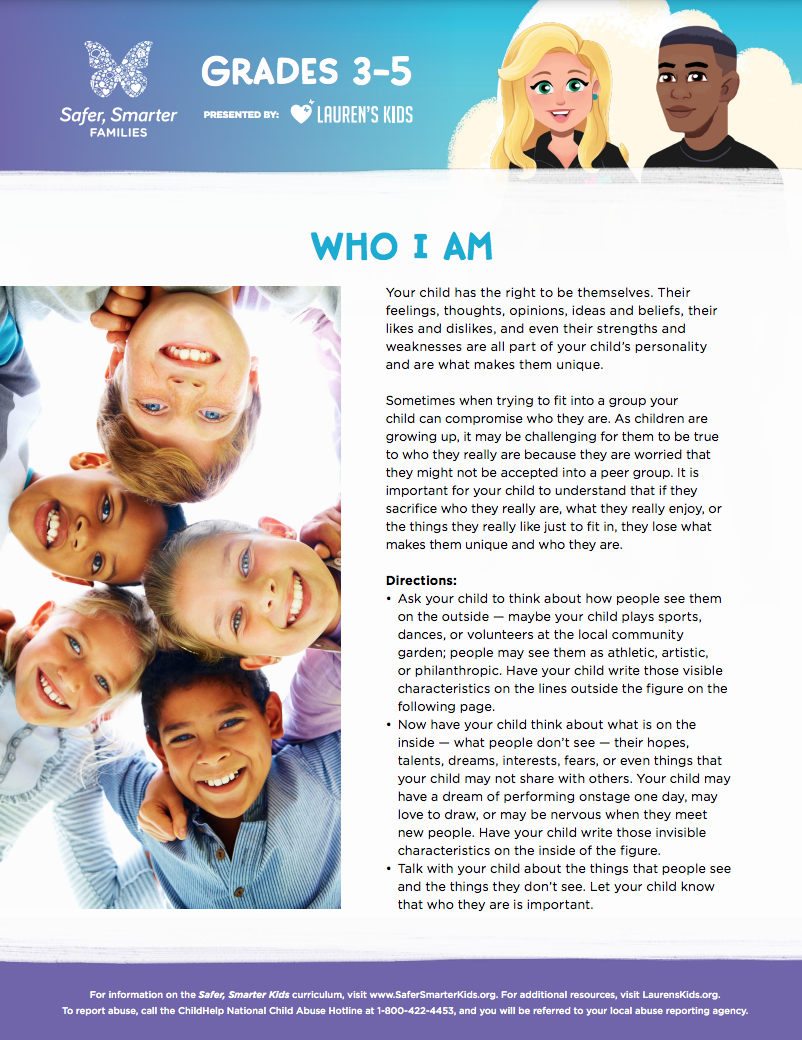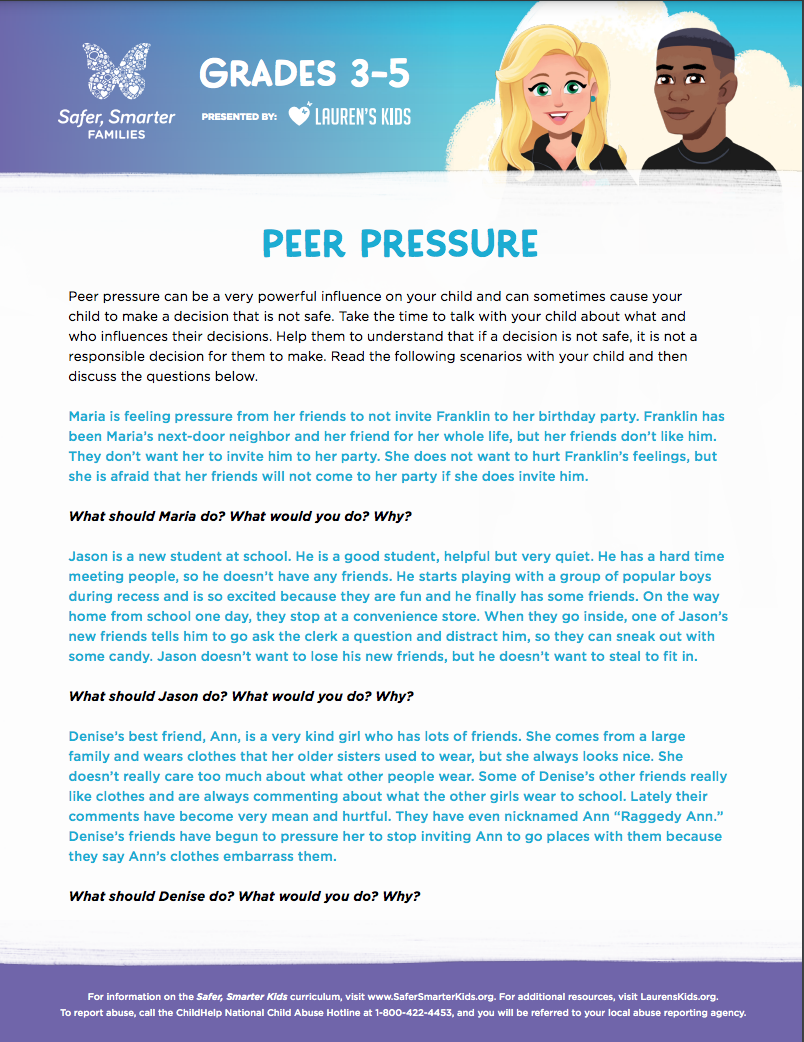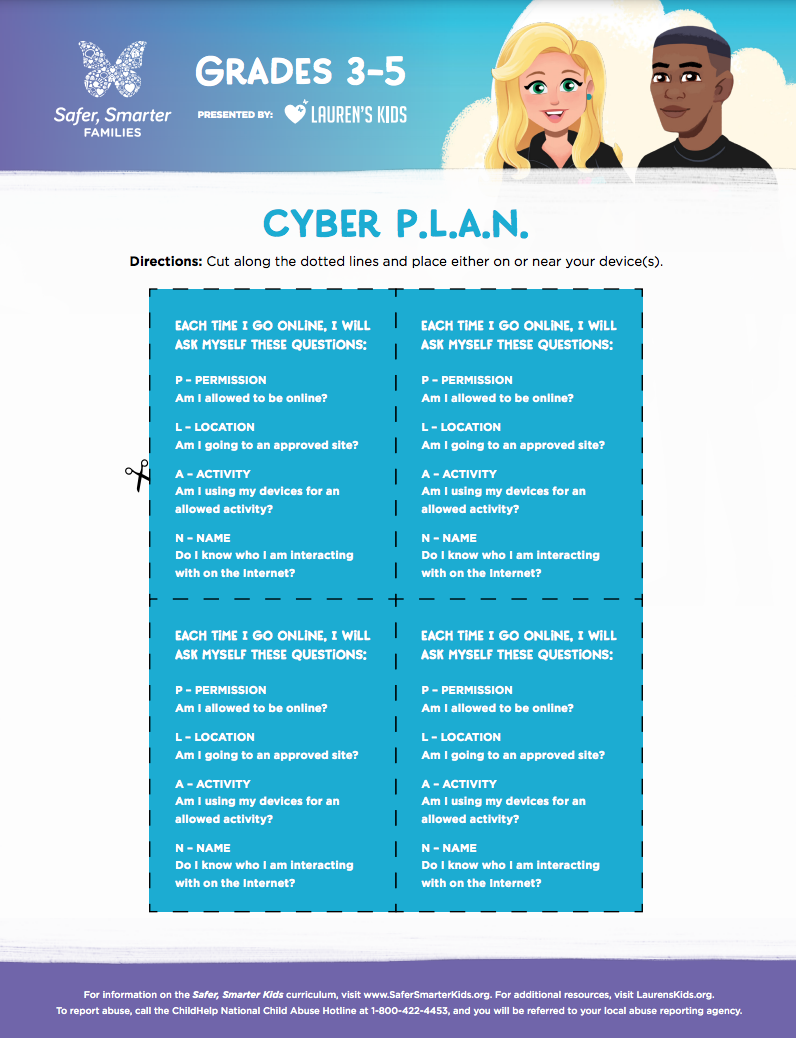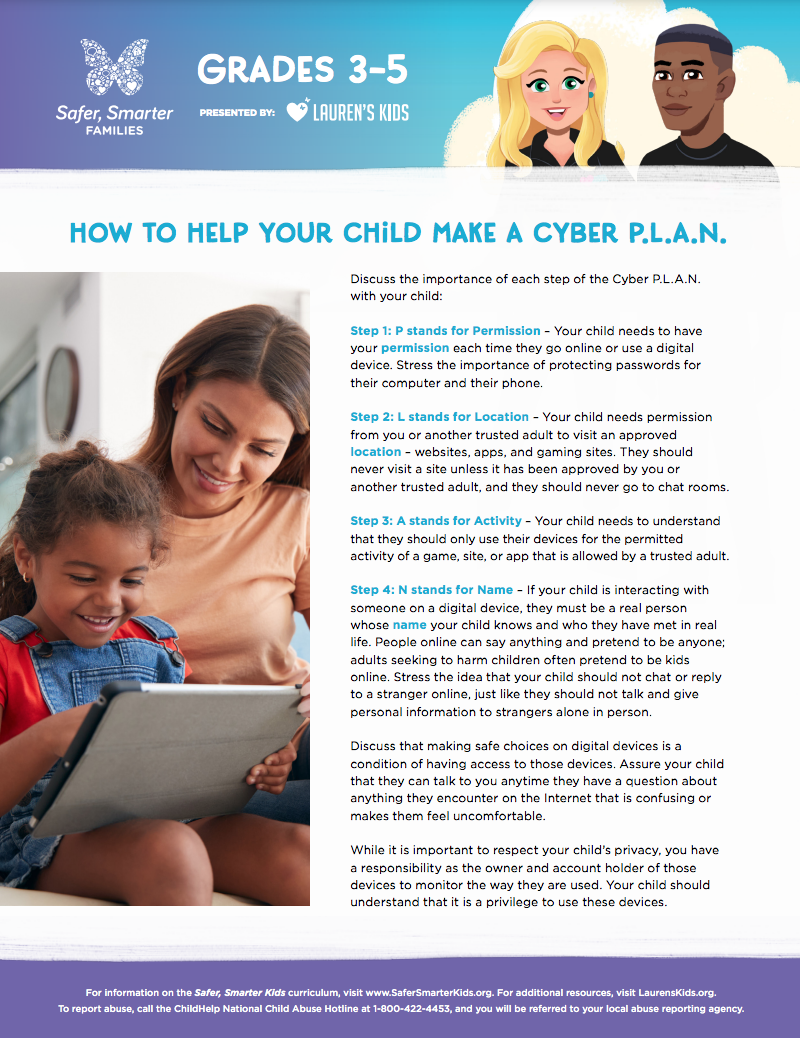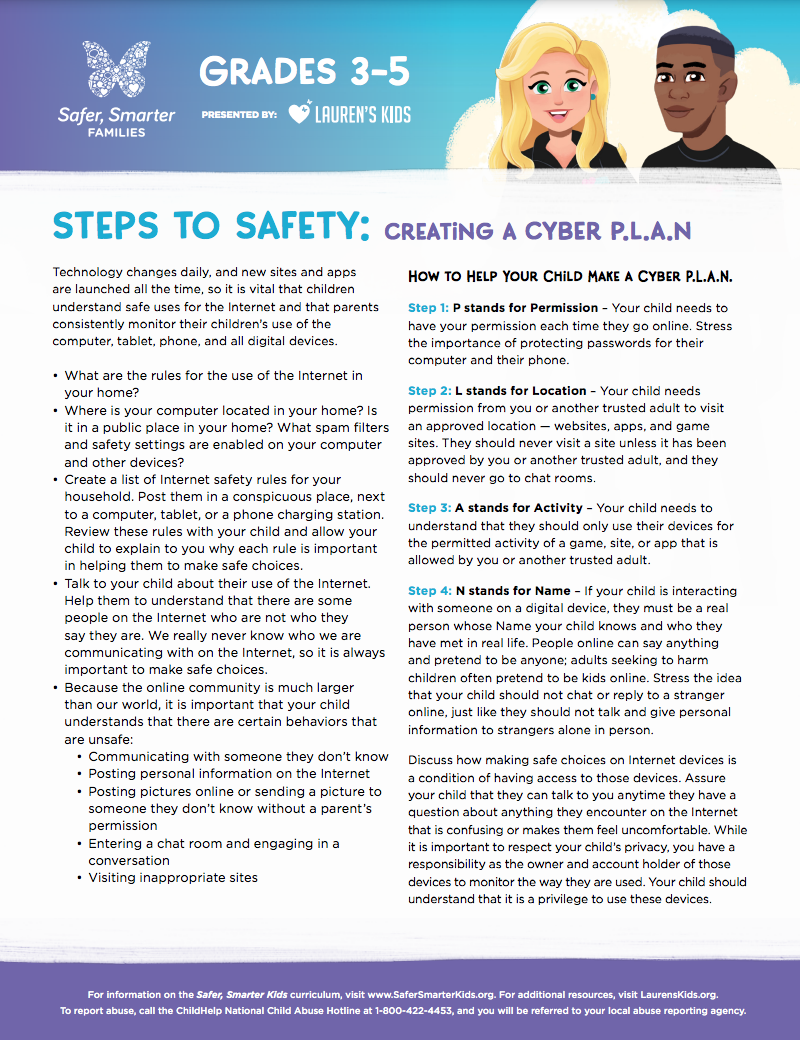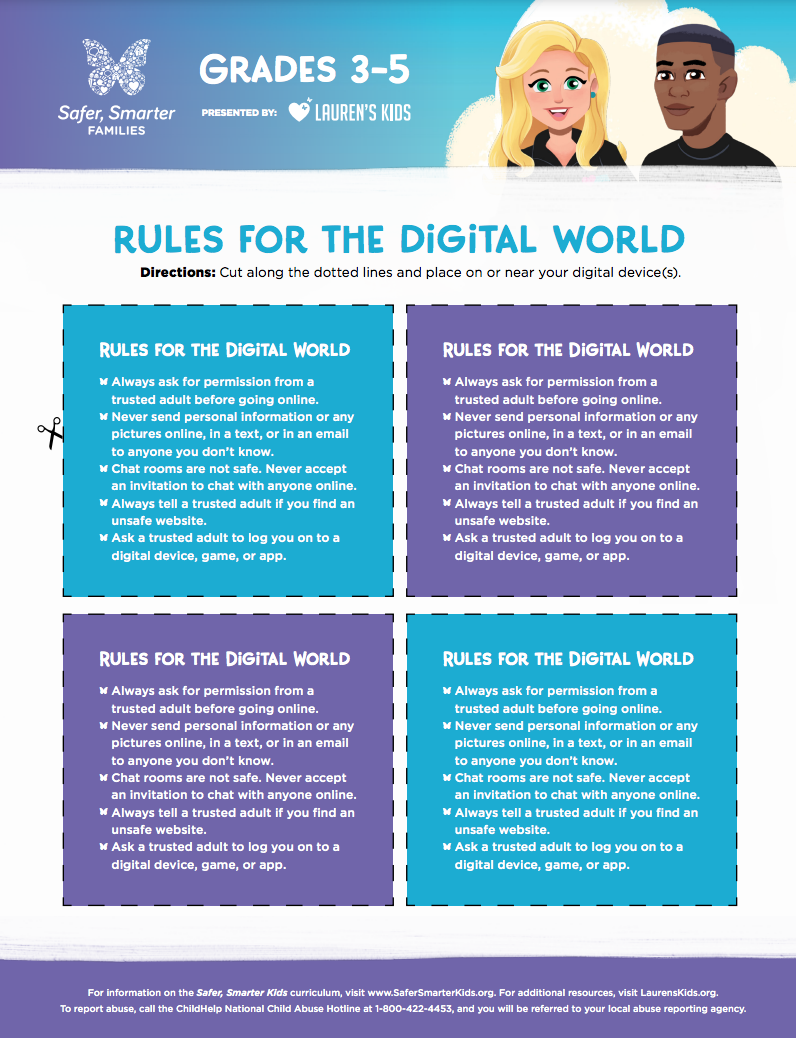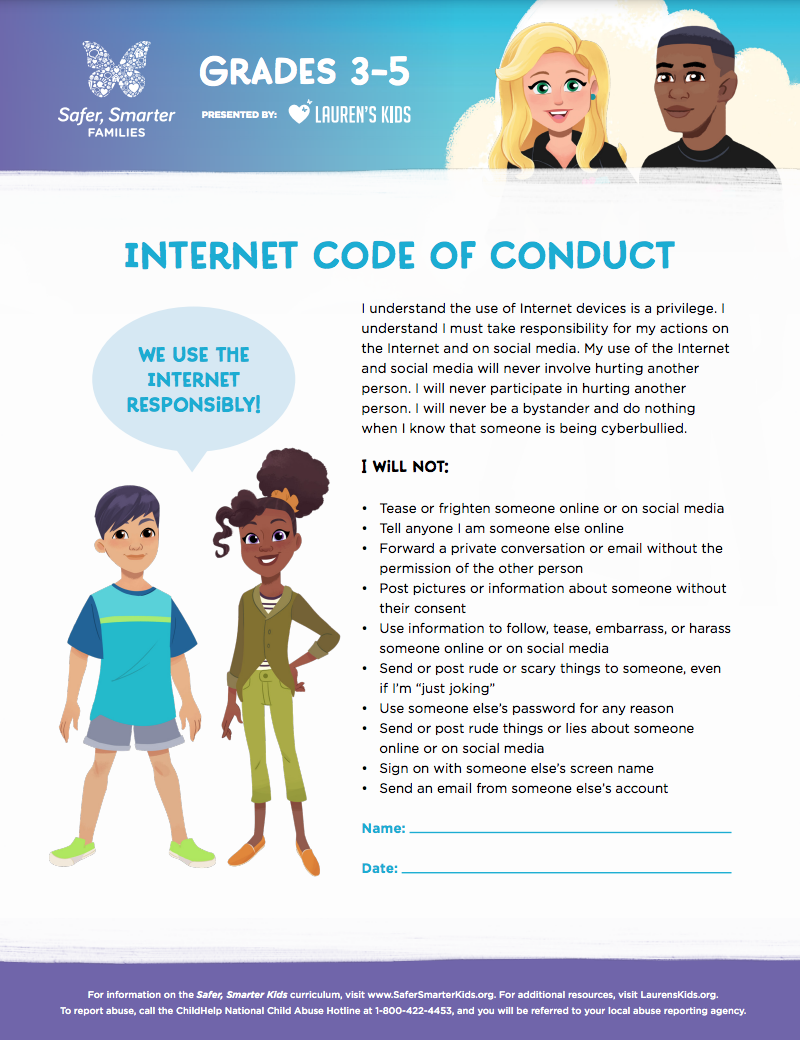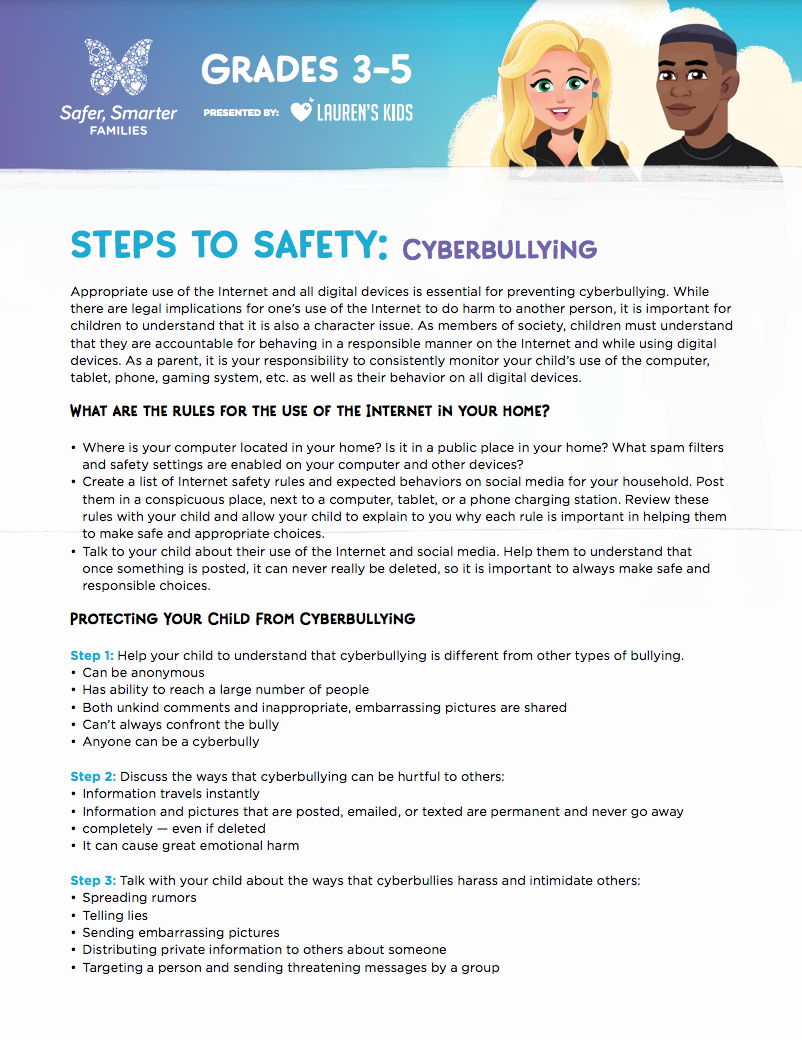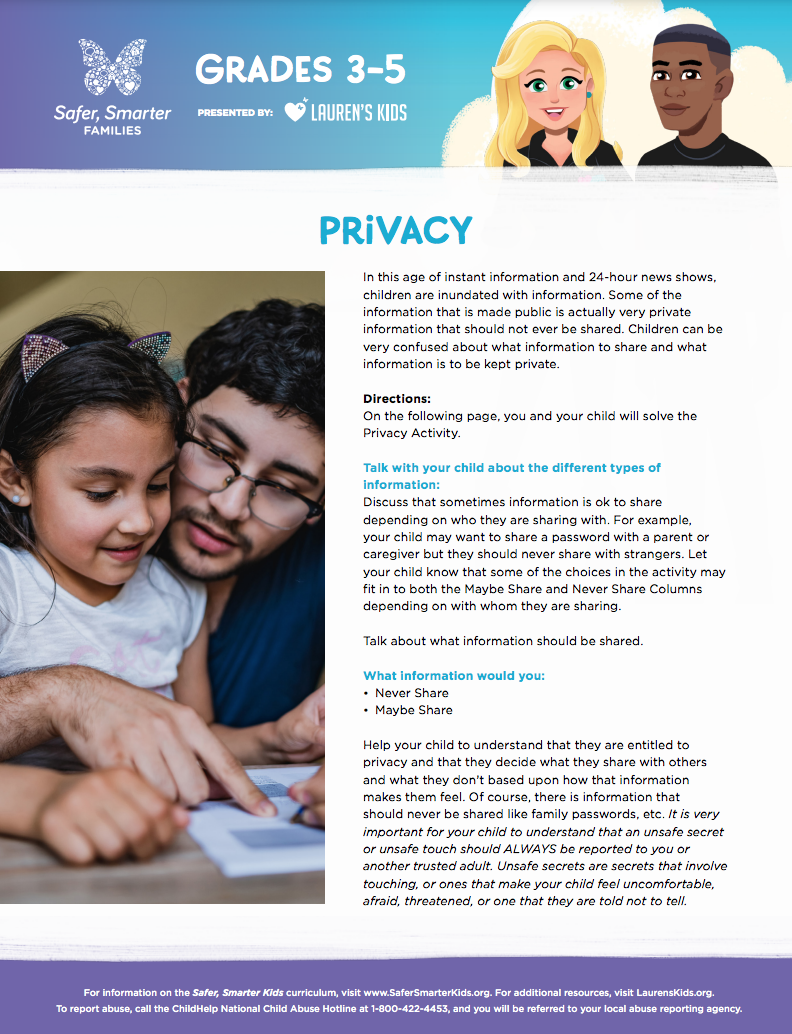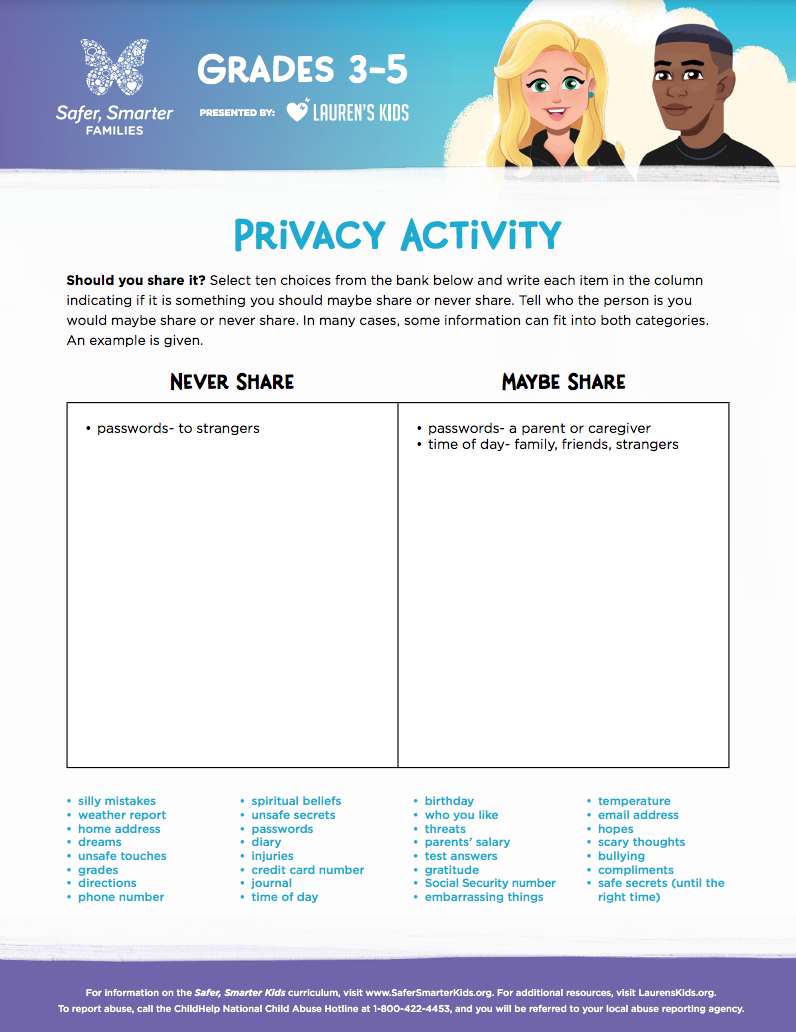Glossary
-
-
Body Boundary
-
The rules you have for touches that feel safe or unsafe to you.
-
-
Childhood
-
Your right to be a kid; to play, learn and have friends without fear.
-
-
Cyber Bullying
-
Using the Internet or social media to threaten or harass someone.
-
-
Cyber P.L.A.N.
-
Your plan to keep you safe on the Internet and social media.
-
-
Cyber Safety
-
The safe and responsible use of digital devices by keeping information safe and secure and being respectful of other people online or with digital devices.
-
-
Grooming
-
The testing of someone’s boundaries in order to gain trust.
-
-
Identity
-
The right to be exactly who you are – the right to have your own ideas, beliefs, and strengths that make you who you are.
-
-
Peer Pressure
-
Feeling the need to agree with or fit in with a group.
-
-
Privacy
-
Keeping others from seeing or hearing things that are personal–your body, personal information, and your personal thoughts.
-
-
Private Parts
-
The parts of your body that are covered by your bathing suit; your mouth is also a private part that no one should touch or put things into without your consent or approval.
-
-
Reporting
-
Reporting is telling about something that involves a threat to safety.
-
-
Respect
-
Your right to be treated like you are valuable and important.
-
-
Responsibility
-
A duty or job that goes along with a right.
-
-
Right
-
Individual freedoms that you are entitled to.
-
-
Safety
-
The right to feel comfortable, happy, and safe in your surroundings.
-
-
Safety NETwork
-
Your group of Trusted Adults with whom you can talk to and get help from if needed.
-
-
Tattling
-
Tattling is a complaint about someone else’s behavior that doesn’t involve safety.
-
-
Trusted Adult
-
A grown-up who will help you make safe decisions and protect you.
-
-
Unsafe secret
-
An unsafe secret is one that makes you feel confused, “icky,” or scared and that you are told not to share.
-
-
Body Boundary Violation
-
When the private parts of the body are touched, an unwelcomed touch is received, or a touch is done with hurtful intent.
-
-
Voice
-
Your right to be heard and to share your opinions, needs, fears, and hopes.



